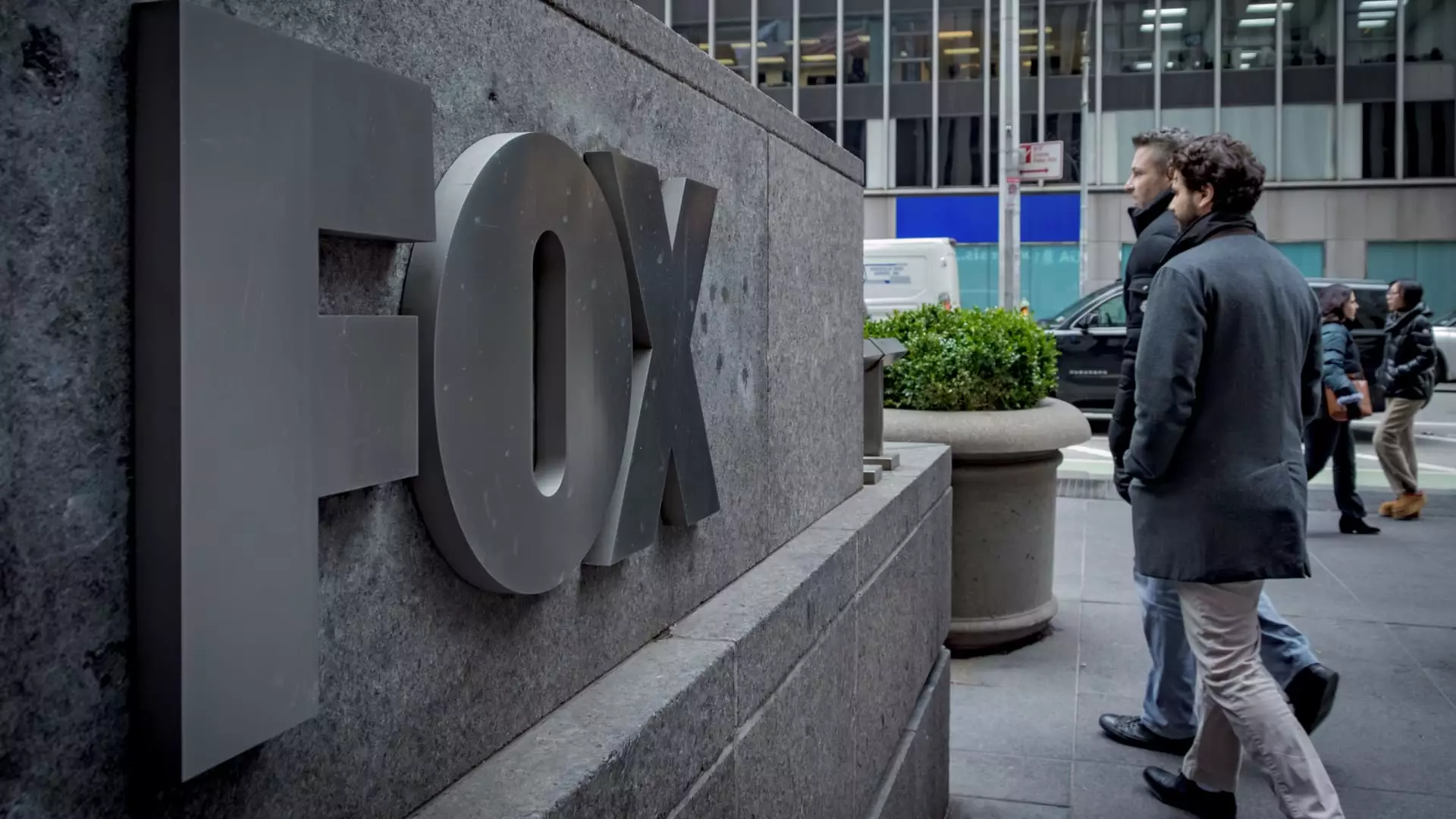Fox Corp. is on the brink of a significant shift in the way it delivers content to audiences with the forthcoming launch of its direct-to-consumer streaming service, Fox One. Unveiled by CEO Lachlan Murdoch, the announcement has piqued the interest of both consumers and industry watchers alike. Set to premiere just in time for the upcoming National Football League season, Fox One represents the company’s strategic pivot into a market that has largely been dominated by nimble competitors like Netflix and Hulu.
Streaming services have revolutionized how viewers consume content, achieving unprecedented levels of convenience and variety. Yet, as Fox leaps into this fray, one can’t help but question whether it is genuinely ready to compete or if it is merely attempting to salvage its position within a changing media landscape. Key pricing details remain elusive, but initial indications suggest a strategy focused on maintaining its traditional cable audience rather than aggressively courting new subscribers.
Pricing Strategy: A Balancing Act
During a recent earnings call, Murdoch made it explicit that the pricing for Fox One would be aligned with “wholesale pricing,” mimicking what traditional cable providers currently pay to access Fox’s channels. Aiming to avoid further losses of traditional cable subscribers, Murdoch described losing them to streaming as an utter failure on their part. Paradoxically, this cautious approach raises significant concerns regarding the service’s value proposition.
Is Fox One positioning itself to offer real competitive pricing, or is it simply repackaging its existing content for a higher fee? The media giant seems caught in a conundrum, struggling to innovate while also clinging to the vestiges of its legacy business model. A “healthy” pricing plan may deter some consumers, especially in a saturated market that already offers varied subscription options, typically at lower costs. This approach reflects a reluctance to fully commit to the shifting tides of consumer demand.
Advertisements vs. Subscriptions: Conflicting Interests
Even amid growth—Fox recently reported a notable 27% increase in quarterly revenue, bolstered through events like the Super Bowl—there remains an underlying tension. How sustainable is their advertising revenue, particularly when the trends show a movement toward ad-free consumption? Advertisements for the Super Bowl have reached jaw-dropping prices, but this is a double-edged sword; such reliance on advertising revenue may hinder Fox’s growth in the direct-to-consumer space, where viewers seek a more tranquil viewing experience unmarked by commercial interruptions.
Consumer sentiments are shifting, particularly among younger demographics who favor seamless, subscription-driven experiences over traditional ad-based models. Thus, while Fox celebrates its ad-centric model, it risks alienating a key demographic that demands commitment to a modernized viewing experience. In the long term, will Fox One become a relic of traditional media? It remains a valid question that can’t be ignored.
Building Partnerships: A Necessary Strategy?
One of the more intriguing aspects of Murdoch’s announcement is Fox’s intention to forge partnerships with other services for bundling. In a landscape where options abound, this tactical move could provide Fox One with a broader reach, albeit also diluting its brand identity in a sea of similar offerings. As streaming giants such as Disney and Warner Bros. forge ahead with their unique apps, Fox’s dependence on collaboration feels a bit like a gamble.
The market has already seen a wave of streaming services rising from collaborative efforts. However, this strategy can also backfire, as it’s potentially synonymous with compromise on quality and consumer offer. If Fox cannot clearly articulate the value of its content within such bundles, it risks being overshadowed by both competitors and its own partnerships.
The Bigger Picture: Cultural Shifts or Just a Media Facade?
Fox One marks a crucial moment for the corporation, hinting at its acknowledgement of the shifting media landscape. However, instead of a bold leap, it feels far more like a tentative step into uncharted waters, marred by uncertainty over pricing and content strategy. The tighter grid of competition, alongside rising consumer expectations, makes it clear: merely replicating traditional cable pricing models in a streaming format may not cut it anymore.
As Fox Corp. stands at this crossroads, consumers and industry experts alike will be closely watching the convergence of interests, value, and innovation. Fox’s next moves could either solidify its relevance in an evolving market or confirm, regrettably, its place among legacy media entities unable to evolve with the times.

